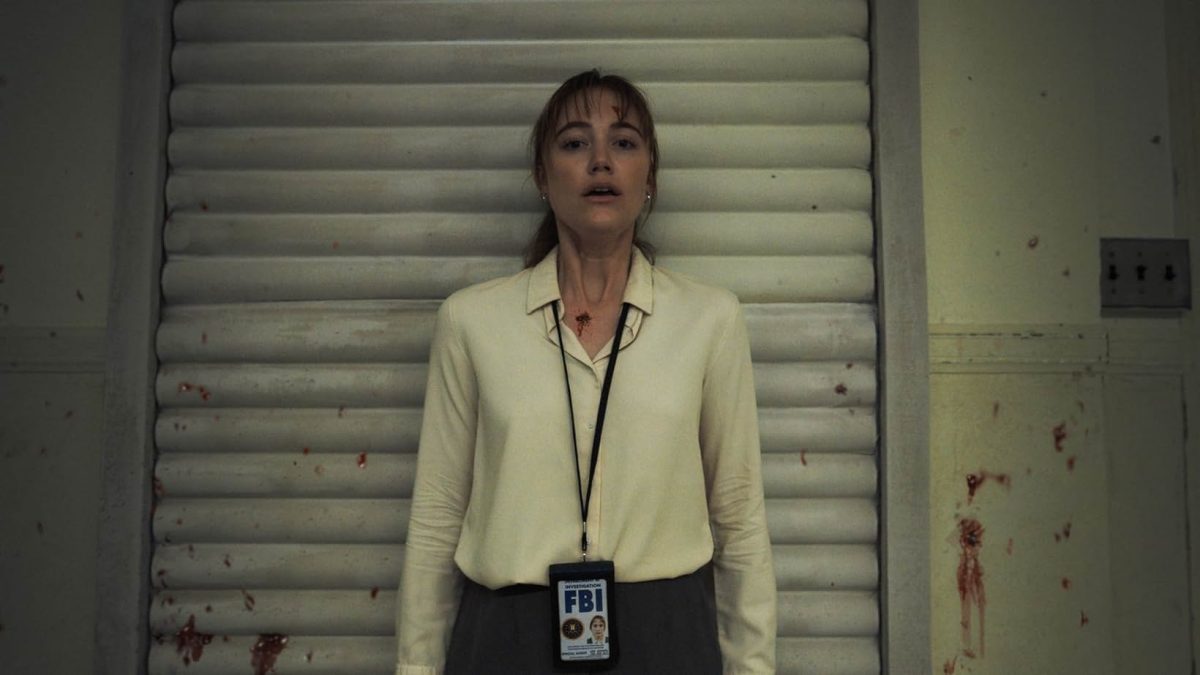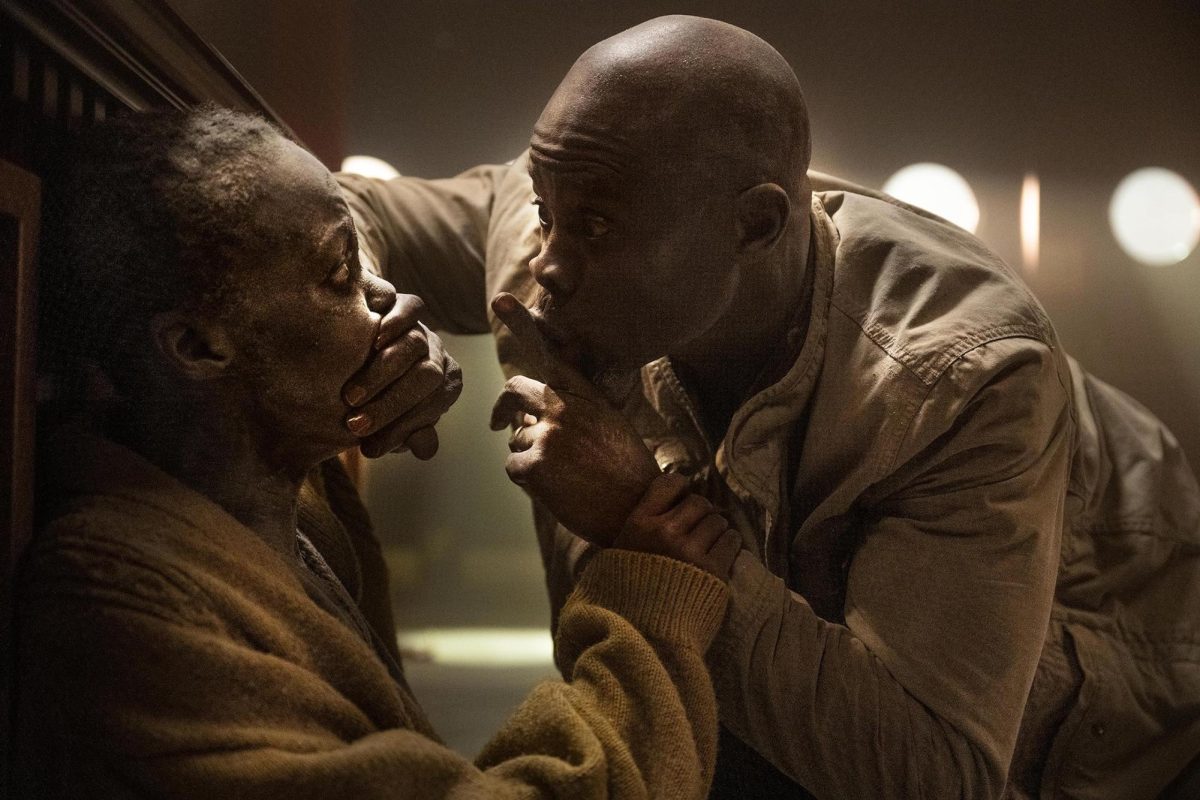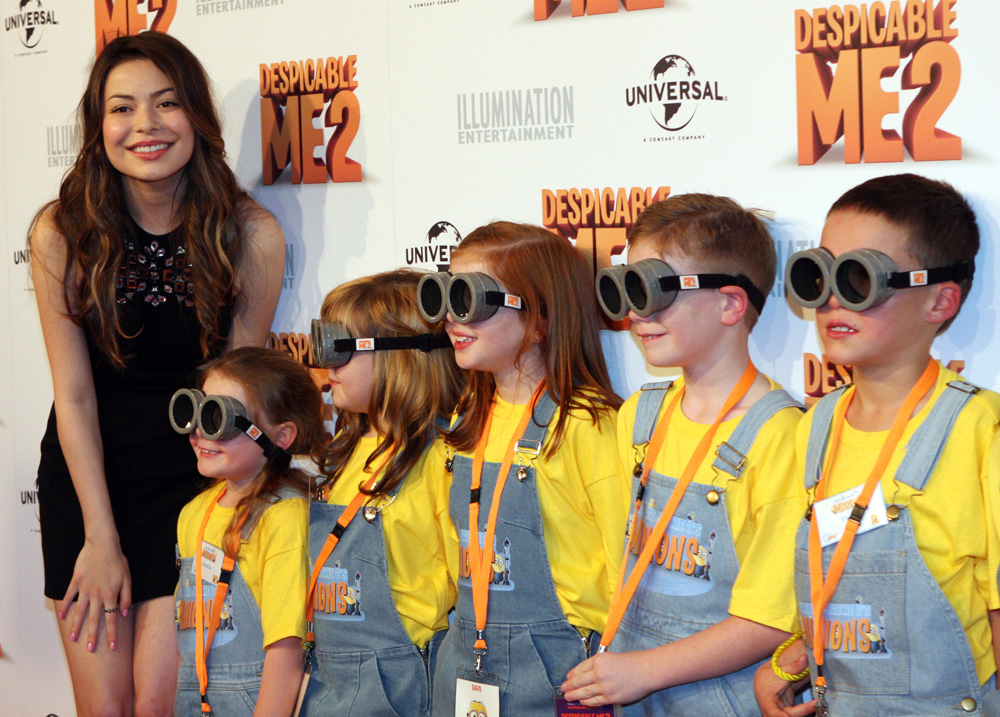The best movies of 2023 encompass a wide range, be they gripping historical dramas from our brightest auteurs or heart-melting depictions of our daily lives.
From what has been an excellent year for cinema, The DI buzz staff has listed some of the best.
“Oppenheimer”
Acclaimed director Christopher Nolan returned to the big screen this year with this film covering theoretical physicist J. Robert Oppenheimer’s life and legacy before and after the creation and use of the atomic bomb during World War II. Nolan presents Oppenheimer’s life through a thought-provoking narrative and stunning visuals of visions of a possible future.
Get The Daily Illini in your inbox!
The film carried the performances brought on by its large recognizable cast including Emily Blunt, Robert Downey Jr. and Matt Damon. However, the stand-out performance is Cillian Murphy’s performance as Oppenheimer himself. Murphy brings out the various complexities of Oppenheimer in a way that places the audience in the shoes of the physicist left to ponder on the power he helped uncover.
The film is truly a spectacle filled with amazing shots that not only portray emotion and story through what is said, but also through what is seen. Ludwig Göransson’s score for the movie also elevates certain scenes with tones that present the beauty of discovering a world unknown to anyone at that time.
In today’s world where the possibility of worldwide conflict gets more probable each day, “Oppenheimer” leaves viewers with a truly disturbing idea of what may happen in our future as Oppenheimer closes his eyes with the realization of what he has done.
“Killers of the Flower Moon”
Adapted from David Grann’s 2017 book “Killers of the Flower Moon: The Osage Murders and the Birth of the FBI,” “Killers of the Flower Moon” is a mesmerizing story about greed.
Director Martin Scorsese is no stranger to large-scale character-driven stories, and this movie is no different. Scorsese took his time making sure his movie is not only true to events that occurred in real life but also respectful and true to the Osage culture shown throughout the film.
He spent a considerable amount of time during the pre-production stage of the movie talking with Osage communities to ensure the movie followed their rules and customs. The result is a movie that feels like a labor of love and care for the Osage.
The film perfectly balances different themes throughout its three-and-a-half-hour runtime, which flies by. The film features incredible performances from Leonardo DiCaprio, Lily Gladstone and Robert de Niro. The true dedication shown by the cast to their characters not only makes “Killers of the Flower Moon” one of the best films of the year, but one of Scorsese’s best works ever.
“Past Lives”
“Past Lives” is a masterful exploration of yearning and the complexity of romance. Director Celine Song stuns in her debut feature, weaving an endearing tapestry of childhood love, rekindling hometown connections after immigration and a love that wasn’t meant to be.
The film follows childhood sweethearts Na Young (Greta Lee) and Hae Sung (Teo Yoo) as their blossoming romance is cut short when Na Young, now going by Nora, immigrates with her family to Canada.
“Past Lives” chronicles two separate reunions, one over Skype, and the latter 12 years down the line in New York. This movie provokes the audience to examine their own relationships — both romantic and platonic — and ask what really differentiates the two.
The touching story is complemented by the scintillatingly vulnerable performances from both leads. The human condition is on display in its rawest form, allowing sympathy for every character, including Nora’s husband Arthur, who would ordinarily be vilified in a romance story such as this.
The sheer brilliance of “Past Lives” makes it one of the most exciting debut features in years.
“Poor Things”
Yorgos Lanthimos revels in the uncanny, and it is perhaps more evident than ever in “Poor Things.” This steampunk-Victorian black comedy is a wonderfully peculiar dive into the human quest to become one’s truest self, free from the shackles of oppressors masquerading as loved ones.
The hauntingly lavish production and design only seek to enhance Lanthimos’ supernatural oddities as well as the hyper-stylized performances. Our protagonist is Bella Baxter (Emma Stone), a pregnant woman resurrected after her suicide through a Frankensteineque procedure with the mind of her unborn child, who embarks on a journey of liberation and libido.
Stone’s performance offers a gleeful response to the fantastically grim events presented to her character, reveling in the macabre with a childlike wonder. The movie depicts the eccentricities of hedonism unabashedly, especially when showcasing Bella’s sexual exploits.
Mark Ruffalo, Willem Dafoe and Ramy Youssef also shine in supporting roles. A marvelous concoction of repulsive hilarity and stellar artistry, “Poor Things” celebrates its weirdness in the best possible way.
“May December”
Todd Haynes tackles many ethical quandaries perfectly in his latest melodramatic masterstroke, depicting the depths of human heartlessness.
The film follows actress Elizabeth Berry (Natalie Portman) as she visits Gracie (Julianne Moore) and Joe (Charles Melton). Gracie is a sexual predator whose relationship with then-13-year-old Joe was heavily sensationalized in tabloids. Elizabeth claims she’s researching for a role while acting as a voyeur for most of the movie, serving as a reminder of society’s obsession with the bizarre and intimate details of complete strangers.
Melton provides one of the breakout performances of the year, adding a layer of poignancy by depicting the pains of a so-called adult stuck in perpetual adolescence. Just as we are made privy to Gracie’s cognizance and weaponization of her predatory nature, so are we exposed to Joe’s naivete and desperation for someone to understand his feelings — most of all himself.
Perhaps the most haunting part of this trio is how effortlessly Elizabeth can replicate Gracie’s moral bankruptcy in her interactions with Joe but fails to bring any supposed depth to the character.
As much as we like to pretend that there is emotional complexity to evil, there often isn’t. “May December” stresses in a most piercingly desperate fashion that such people are little more than the sum of their actions.
“The Holdovers”
Alexander Payne’s “The Holdovers” blends comedy and melancholy to great effect, creating something that feels deeply human. Set in the 1970s, the film follows a boarding school professor (Paul Giamatti) who has been tasked to watch over the students forced to stay at the school during winter break.
Among them is Angus (Dominic Sessa), a fiery kid stuck in a new family dynamic who wants nothing more than to leave, and Mary (Da’Vine Joy Randolph), the school’s head cook whose son died in the Vietnam War.
As the film progresses, we see how this motley crew starts to form genuine bonds with one another as they reveal and reckon with their fears, desires, secrets and goals. With an already iconic lead performance from Giamatti, a knockout performance from Joy Randolph and an astounding debut from newcomer Sessa, the film ranks among the best acting ensembles of the year.
Couple that with some of the most natural film emulation ever put to screen, a firecracker script and gorgeous set design, and it is no wonder that this film has already earned its reputation as a holiday classic.
“Anatomy of a Fall”
Winner of the prestigious Palme d’Or Award at this year’s Cannes Film Festival, “Anatomy of a Fall” is unforgettable and unique. Following Sandra (Sandra Hüller), a writer trying to prove she did not kill her husband after he died from a suspicious fall, the film explores how our search for objective truth is only propped up by subjective narratives.
Whether it be digital technologies, language or emotion, director Justine Triet uses the format of a legal thriller to only infuse more and more uncertainty. Hüller’s lead performance is incredible, harboring a nuanced interiority that explodes in fascinating ways.
Yet it is the performance by Milo Machado Graner as Sandra’s son that binds the film together and reveals it to be something so satisfyingly complex. With “Anatomy of a Fall,” it is not really important whether or not Sandra did it, but rather if the audience is able to believe her.
“The Boy and the Heron”
A decade after his presumably last film, Japanese auteur and director of Studio Ghibli Hayao Miyazaki returned with a new work that is staggering in its complexity and beauty.
Following Mahito, a young boy whose mother died from a hospital fire as a result of bombings during World War II, “The Boy and the Heron” depicts the boy’s journey alongside a grey heron who claims he can reunite Mahito with his mother.
As expected from a Studio Ghibli film, the art is impeccable. The hand-drawn animation is fluid and expressive while the painterly colors are beautifully captivating.
The abstraction of the narrative in favor of something more surreal and dream-like makes this film irresistibly inscrutable, with themes of legacy, letting go of the past and moving on from grief intertwined with metatextual implications to Miyazaki himself, who seems to be thinking about the end of his life’s work. “The Boy and the Heron” cements itself as a true masterpiece within a studio known for standout films.
“The Iron Claw”
“The Iron Claw” tells the story of the Von Erichs, a family of wrestlers who are no strangers to tragedy as many of them lose their lives.
Led by its strong performances, the movie puts character building at its forefront with all four of the brothers interacting with one another with their passion for wrestling. However, as their father pushes them more and more, things begin to go awry.
The cinematography is beautiful, with lots of shots exemplifying the rush that wrestling brings for those in and outside the ring. Whether you are a wrestling fan or not, “The Iron Claw” is sure to leave an impression on you — possibly leaving you in tears by the time the credits roll.
“Asteroid City”
“Asteroid City” might just be Wes Anderson’s least accessible film yet. Known for his symmetric compositions, colorfully precise architectures and singularly quirky narratives, the director has been moving further and further away from our known reality and into a reality of his own making.
Anderson, telling a story of uncertainty and panic upon an alien arrival in a desert town following World War II, channels many modern anxieties to emotionally dazzling effect. The nested doll structure of the film as a play within a television broadcast only reinforces Anderson’s obsession with the intersection between authorship and truth, showing how the things we create are fingerprints of ideas we might not even know we carry.
Anderson regulars like Jason Schwartzman are at their best while newcomers like Scarlett Johansson and Tom Hanks fit into the aesthetic perfectly, giving the film many of its most comic and heart-wrenching moments.
“Asteroid City” proves that — no matter how many artificial intelligence parodies and Tik Tok trends try to dispute it — there is only one Wes Anderson. Even Anderson himself seems to still be grappling with the depth his images carry.
“Ferrari”
Eight years since his last film, Michael Mann returns with what seems at first like an unusual addition to his canon. For a director known for his epic crime sagas and riveting depictions of humans as they navigate the most crucial and tense moments of their lives, “Ferrari” is unusually quiet.
Though the film itself is brimming with the melodic revs of engines, the screeching of tires against asphalt and the pounding electricity of the race, the drama of “Ferrari” spends most of the movie simmering.
Enzo Ferrari (Adam Driver) is at a crossroads. His company is going bankrupt and any hope for the future requires winning at the Mille Miglia. Meanwhile, his relationship with his wife Laura (Penelope Cruz) has gotten more contentious following the death of their son and his relationship with his mistress Lina Lardi (Shailene Woodley).
“Ferrari” blends melodrama with thrill, building towards a harrowing and sobering ending that reveals the film to be something uniquely thunderous and intricate. With Enzo Ferrari, Mann continues his decades-long study on the manifestations of masculinity and how the intersection between one’s duty and one’s personal life can result in catastrophe or triumph.
“Godzilla Minus One”
Set in post-World War II Japan, this new entry in the “Godzilla” franchise manages to reinvent itself and set a new path for future films. Containing a gripping story about trauma and hope, the film presents us with a cast of characters that are not only interesting and engaging but also have something to fight for.
Compared to the American Godzilla films, “Godzilla Minus One” takes its time before the chaos and destruction, allowing viewers to connect and engage with the characters before they are placed in a situation with the titular kaiju.
As for Godzilla himself, the “king of the monsters” does not hold back. This Godzilla has one true goal: destroy anything he perceives to be a threat to him. The scenes with Godzilla are arguably the highlight of the film with the amazing effects of carnage and destruction he imposes upon Japan.
With “Godzilla Minus One,” Director Takashi Yamazaki sets a new bar for future Godzilla movies, proving that the human aspect of the productions can be just as good as the kaiju himself.
“John Wick: Chapter 4”
Part of the miracle of the John Wick franchise is how the filmmakers have managed to keep evolving the scope of the world and action in interesting ways while delivering undeniable and entertaining monuments to action. It is hard to imagine the fourth film of any franchise being the best, yet for John Wick, that may be the reality.
“John Wick: Chapter 4” is an avalanche of ingenious stunt work and escalations of photographed action. Each new sequence feels distinct from the last, with each working in its own intricately engineered way.
The story of John Wick’s (Keanu Reeves) path to escaping the machinations of the High Table is engaging and serves as a sturdy backbone to mount the film’s breathtaking action spectacles. Bill Skarsgård chews the scenery as the film’s villain while additions like Donnie Yen and Rina Sawayama steal the show with ease.
Reeves once again asserts his talent and physical prowess while also bringing a surprising emotional depth that gives the film a needed sense of stakes and finality. “John Wick: Chapter 4” is a satisfying and awe-inspiring cap on the John Wick saga.
“Rocky Aur Rani Kii Prem Kahaani”
For as much of the tumultuous year 2023 has been for Hollywood, it has arguably been even crazier for Bollywood. As the landscape of Indian cinema as a whole continues to change in new ways, “Rocky Aur Rani Kii Prem Kahaani” is a reminder that there will always be a place for that vintage Bollywood romantic epic that has become almost synonymous with the word “Bollywood.”
Directed by Karan Johar, the film is a burst of color, joy, grief, emotion, romance and heart. Johar builds upon the Yash Chopra cinematic framework, preserving its foundation and ethos while modernizing the aesthetic for a new generation of moviegoers. Less than reinvention, “Rocky Aur Rani Kii Prem Kahaani” is a celebration of older Hindi cinema.
Alia Bhatt continues to show why she has become one of the most reliable and celebrated actresses of her generation, though the entire movie rests upon Ranveer Singh’s revelatory performance as Rocky Randhawa. Iconic from the moment he enters the screen, Singh embodies the role with pizzazz, warmth and unwavering dedication.
The film works both as a melodramatic romance between two people from different backgrounds and as a laugh-a-minute kind of comedy. With songs like “Dhindora Baje Re” and “What Jhumka?,” Johar continues his streak of propping up some of the best Bollywood albums of their time alongside his films.
“Guardians of the Galaxy Vol. 3”
James Gunn’s final contribution to the Marvel Cinematic Universe is a satisfying conclusion to the “Guardians of the Galaxy” trilogy. The film contains a wonderful story with great visuals that are played out through stellar performances by several of the film’s actors, including Chris Pratt, Bradley Cooper and Chukwudi Iwuji.
The action sequences in the movie are not only very well choreographed, but contain some of amazing camerawork keeping viewers on the edge of their seats. Combine this with a soundtrack of great needle drops — another staple of the “Guardians of the Galaxy” series — and the movie is a blast to sit through.
The movie also knows how to balance these moments of action with its more serious moments as it delves into the deep situations characters experience. As a result, “Guardians of the Galaxy Vol. 3” checks all the boxes for not only a great comic book movie but a wonderful finale to an amazing trilogy.
“Barbie”
A brightly colored exploration of feminism in the 21st century, “Barbie” is a dazzling addition to Greta Gerwig’s filmography. It hits all the right notes for both tone and message, as the real-world scenes are as sobering as the Barbieland scenes are akin to visual candy.
Margot Robbie shines as the lynchpin of the entire world in the universe of “Barbie,” grappling with the potential harm the toy line has caused to girls around the world as well as her reclamation of what it means to be a woman.
Gerwig manages to toe the line between delivering a message and presenting a feast for the eyes, laden with unique pop culture references and gags.
While some of the messaging may come off as heavy-handed, there is still a lot of insightful commentary beneath the sickeningly sweet world. The supporting cast shines as well, and given the glamorous set design, it is impossible that the joy on display in the musical sequences was not real. A hysterical watch with genuine things to say, “Barbie” remains one of the most fun releases of 2023.
“The Killer”
“The Killer” answers the age-old question, “What if you sucked at your job?” David Fincher’s latest protagonist offers nothing in the way of the flamboyance or competence we have come to expect from hitmen in movies.
Michael Fassbender plays the killer as a pure stoic, with no obvious motivations at first. A failed assassination attempt bookended by one of the most simple yet elegant deliveries of an expletive in an action movie in a while, leads to the Killer having his wife attacked as retribution.
While the plot becomes a standard revenge story at this point, Fincher’s supreme minimalist stylings and experience with action cinema shine through to deliver a suave ode to the genre.
There is not much in the way of intriguing characters, but watching the Killer go through his list of targets is quite fun. Tilda Swinton manages to steal the show for the brief period she is on screen before being unceremoniously dispatched, while Fassbender plays the undemanding character well.
The juxtaposition of brutal kills with The Smiths is quite entertaining, as well as the score by Fincher’s favorites Trent Reznor and Atticus Ross. “The Killer” is a smooth, savvy movie that plays to the strengths of those involved.
“El Conde”
Chilean auteur Pablo Larraín shines once again in this gothic rewriting of history. “El Conde” presents an alternate timeline in which the infamous dictator Augusto Pinochet (Jaime Vadell) is a 250-year-old vampire.
Maniacally hilarious, the makers clearly enjoyed the visual gag of putting blood-soaked hearts into a blender to make a smoothie fit for a tyrant — given how well it works with the beautiful black-and-white cinematography, one cannot fault them for thinking so.
The motives of our leaders’ actions being monstrous enough that they might as well be blood-sucking ghouls of the night is a tad overused in the movie, but sets up the hilarious conflict for the first act with the mystery unironically culminating in “the butler did it.”
The plot thickens when Pinochet’s non-vampiric children hatch a plan to kill their father through an exorcism performed by a young nun (Paula Luchsinger) to obtain his inheritance. Larraín strikes a perfect blend of debauchery and bloodlust amongst the host of vampires, while steadily increasing the tyranny and grisliness portrayed onscreen.













